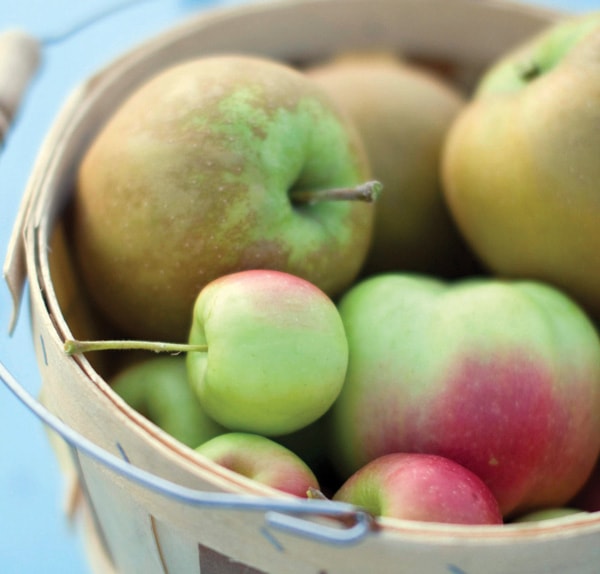Old-fashioned apples are back in fashion.
After nearly disappearing from the marketplace, apple varieties that were popular decades or even centuries ago are making a resurgence.
The varieties, known as antique or heirloom apples, number in the thousands and carry names such as Sheepnose, American Mother, Lady Sweet and Nickajack.
And thanks to growing interest in all foods local and heirloom, they increasingly are showing up at farm stands and markets, at pick-your-own orchards and in ciders and baked goods.
The apples provide a fresh source of income for apple growers, allowing them to distinguish themselves from the average orchard.
For consumers, the apples are a chance to buy and taste a uniquely local product, something unlikely to be grown anywhere else in the country.
There’s been strong interest in antique apples in recent years, but the past year in particular has seen enormous growth, said Gary Paul Nabhan, a chair in sustainable food systems at the University of Arizona who has a two-hectare orchard of his own.
“Foods that are memorable, have an incredible history and incredible flavour and texture all of the sudden are back on our screen,” said Nabhan.
“These apples are so absolutely delicious and have such remarkable stories with them that once you’re introduced to them you can’t go back to squishy Red Delicious.”
Incredibly, there are an estimated 15,000 or more apple varieties that have been named and grown in North America.
But of the 4.5 billion or so kilograms of apples grown in the U.S. each year, the top 10 varieties make up 80 per cent of the production.
The top varieties — the ones commonly found in supermarkets that most everybody knows — include Red Delicious, Gala, Golden Delicious, Granny Smith, Fuji, McIntosh and Rome. But Americans do not live on supermarket varieties alone, apple aficionados are saying.
At one time, Steve Wood grew only McIntosh, Cortland and other common varieties at his Poverty Lane Orchards & Farnum Hill Ciders farm in Lebanon, N.H.
But the market changed, and apple growers worldwide began delivering uniform, large waxed apples year-round.
No longer able to command a premium for his crop of standard apples, Wood bulldozed his orchard, began growing old-style varieties and branded his harvest as “uncommon apples.”
Today, he sells them from his retail farm stand while also shipping them to wholesalers and retailers along the East Coast and as far away as Texas and Michigan.
About 25 per cent of his orchard still goes to Macs and Cortlands, with roughly 35 per cent to uncommon apples good for eating.
The remaining 45 per cent goes to other apples — some of which are of the old-style variety, which are used to make alcoholic ciders.
His eating varieties include Wickson, Hubbardston Nonesuch, Hudson’s Golden Gem and Ashmead’s Kernel. His cider apples go by names such as Dabinett, Yarlington Mill and Somerset Redstreak.
Wood turned to heirloom apples because it made economic sense. He’s not sure he’d still be in business if he hadn’t.
“This is a commercial orchard. It’s not a museum,” he said. “It’s not just whether these varieties are worthy of preservation. It’s whether we can sustain a business off it.”
Clarkdale Fruit Farms in Deerfield, Mass., has been expanding its selection of antique apples. About two hectares of the 10-hectare orchard is devoted to antique types, up from 0.8 to 1.2 hectares a few years ago, said third-generation owner Tom Clark.
Some of the old-style varieties aren’t good for simply chomping into, but they’re good for cooking (Duchess of Oldenbergs and Gravensteins, for example) or making cider (Baldwins, Golden Russets and Roxbury Russets), Clark said.
“Horticulturally, it’s interesting, and it helps out sales, growing different things,” Clark said.
Dan Bussey’s Albion Prairie Cider Orchard & Mill in Edgerton, Wis., may be small, but the selection is wide with more than 250 types of heirlooms. He sells some of the apples at his orchard and to local markets, but most of his production goes to alcoholic cider, each with its individual flavour. Much of the growth in antique apples is from ciders, he said.
“We have to get people used to trying these again, and realizing how good they are they should be part of our diet,” he said. “Once we get people to try them, they are very receptive.”
